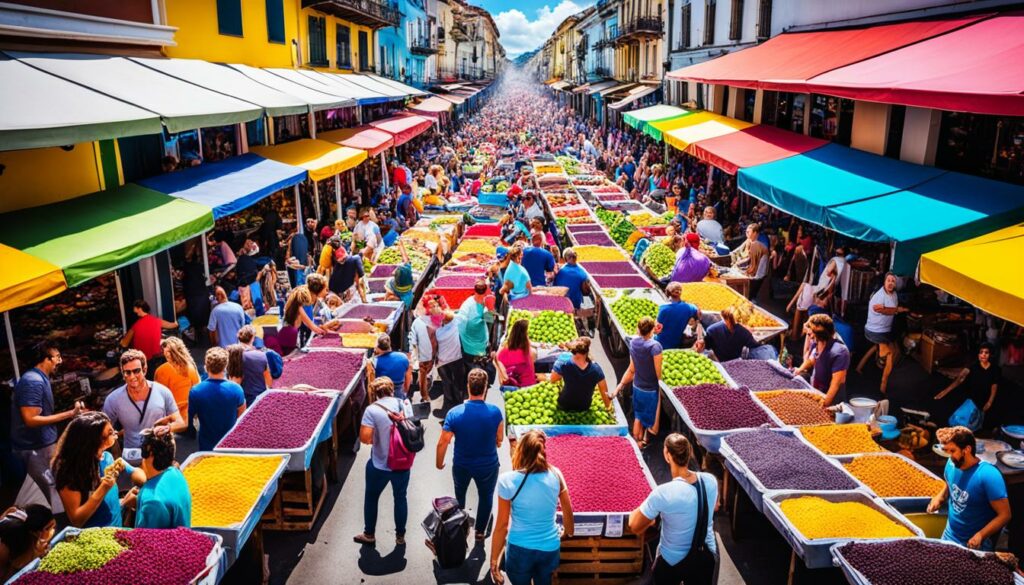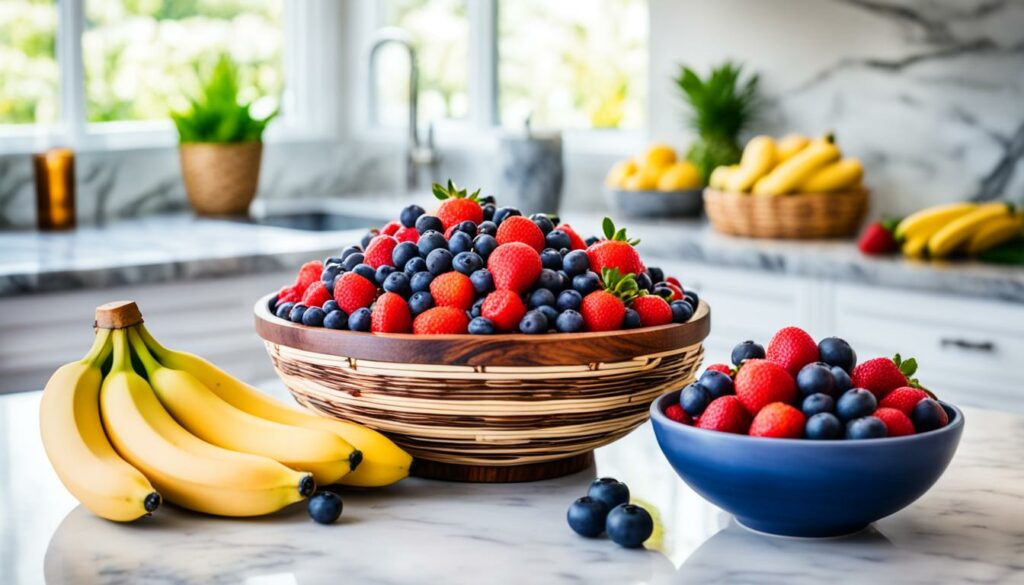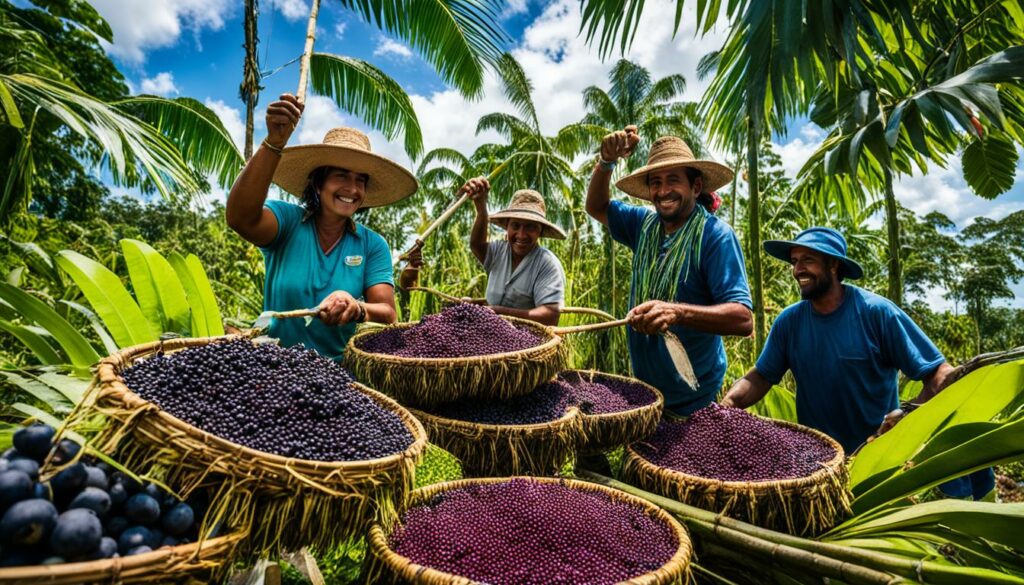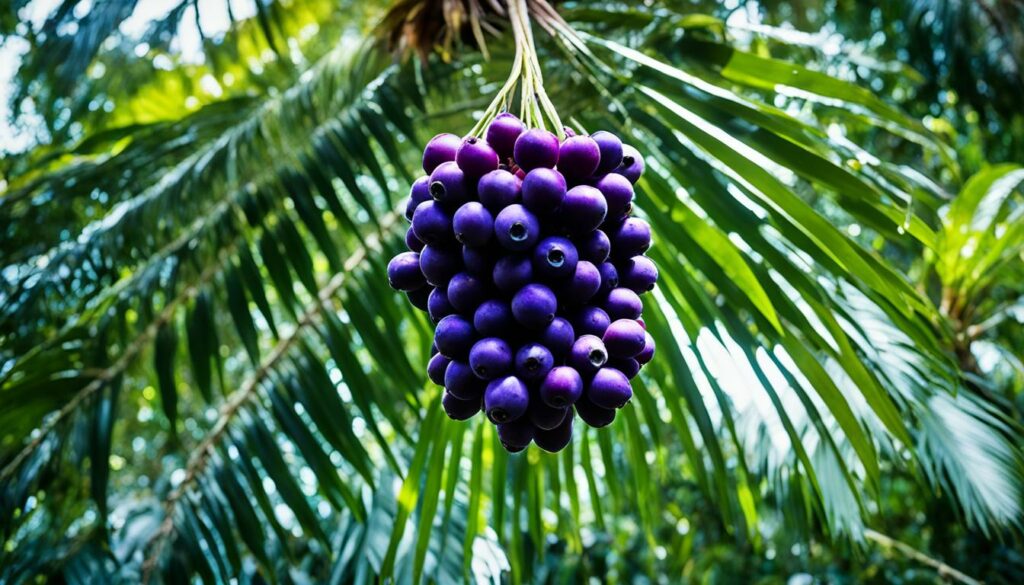Have you ever wondered where the popular superfood Acai comes from? This small, dark purple berry has taken the health and wellness industry by storm and is hailed for its numerous benefits and nutritional value. But its origins are rooted in a rich history that stretches back centuries, intertwined with the cultures of indigenous communities in the Amazon rainforest. So, let’s embark on a journey to discover the fascinating origins of the Acai berry and uncover the secrets hidden within.
The Acai berry, known for its antioxidant properties and high nutritional content, is sourced from the tall Acai palm trees. These magnificent trees, reaching heights of 15 to 30 meters, thrive in the fertile Amazon River basin, spanning countries like Bolivia, Brazil, and Colombia. For generations, indigenous tribes in these regions have revered the Acai tree for its berries and palm hearts, leaves, and bark, which have served as essential sources of food and medicine.
As Acai’s fame grew over time, urban populations in Brazil caught on to its health benefits, eventually reaching North American markets in the early 2000s. Today, Acai is recognized as a superfood, celebrated for its powerful antioxidants, essential fatty acids, and abundant vitamins and minerals.
Key Takeaways:
- The Acai berry has a rich history intertwined with indigenous cultures in the Amazon rainforest.
- Acai comes from tall Acai palm trees that thrive in the fertile Amazon River basin.
- Indigenous tribes have long valued the Acai berries and other parts of the Acai palm tree.
- Acai’s popularity has spread from Brazil to North American markets.
- Acai is known for its antioxidant properties and high nutritional content.
The Origins of Acai
The Acai fruit is just one part of the Acai plant, primarily found on tall Acai palm trees. These trees have distinguishing characteristics such as beige-purple flowers, ribbon-like leaves, and dense clusters of berries ranging from green to purple.
Each year, an average Acai tree produces 20kg of fresh fruit. The Acai palm trees thrive in the tropical climate of the Amazon River basin, especially in the Brazilian state of Pará, which is responsible for over 90% of Brazil’s Acai fruit exports.
Throughout history, the Acai fruit has played a significant role in the diets of indigenous tribes in South America, providing them with essential nutrients and sustenance. Today, Acai’s popularity has spread globally, and it is recognized as a superfood renowned for its numerous health benefits.
Acai Palm Tree
The Acai palm tree (Euterpe oleracea) is a species native to the Amazon rainforest and is highly adaptable to the region’s tropical climate.
These tall and slender palm trees can grow up to 15 to 30 meters in height, featuring long, pinnate leaves that arch gracefully. The Acai palm tree produces small yet vibrant clusters of berries harvested for their nutritional properties.
The Acai palm tree is a vital resource for indigenous communities and the global market, providing sustenance, economic opportunities, and a connection to the natural ecosystem.
Acai Harvesting
Harvesting Acai involves climbing the tall Acai palm trees and carefully harvesting the ripe berries.
Traditionally, skilled individuals known as “Acaieros” use ropes made from lianas or sturdy vines to ascend the trees, navigating their way to the clusters of berries. Once at the desired height, they use specialized tools to cut the clusters and let them fall to the ground.
Harvesting Acai requires precision and careful handling to ensure the berries remain intact and undamaged. From there, the berries are processed into a variety of Acai products, including pulp, juices, smoothies, and supplements.
Acai Fruit
The Acai fruit is a small, round berry with a deep purple hue. It is about the size of a grape, with a thin outer skin that covers a juicy pulp and a large seed at the center.
Rich in antioxidants, vitamins, minerals, and healthy fatty acids, the Acai fruit has gained recognition worldwide for its potential health benefits. It is known to support general health, boost the immune system, promote brain function, and aid in weight management.
Consumers can enjoy Acai in various forms, such as frozen pulp, smoothies, bowls, desserts, and even beverages like Acai wine.
| Acai palm tree | Acai fruit | Acai harvesting |
|---|---|---|
| Beige-purple flowers | Small round berry | Climbing tall trees |
| Ribbon-like leaves | Deep purple hue | Harvesting ripe berries |
| Dense clusters of berries | Juicy pulp | Careful handling |
Acai in Culture & History
Acai holds great cultural significance among Amazonian tribes and villages. It has been consumed by indigenous communities for centuries, playing a central role in their traditions and way of life. The deep-rooted Acai culture reflects the close connection between the indigenous people and the Amazon rainforest, where the Acai palm tree thrives.
Indigenous tribes such as the Shuar and Yanomami have long recognized the value of Acai berries. They have used the berries not only for sustenance but also for their medicinal properties. One notable use is the creation of Acai wine, a fermented beverage made by mashing Acai berries and allowing them to ferment naturally. This Acai wine has been treasured for generations, believed to possess numerous health benefits ranging from enhancing physical vitality to boosting immune system function.
“Acai has been a part of our culture for as long as we can remember. It is not just a fruit; it is a symbol of our heritage and traditions. We honor the Acai tree and its gifts.” – Chief Raoni, Kayapó Indigenous Tribe
In the 1970s, Acai consumption started to spread beyond indigenous communities and reach urban populations in Brazil. Roadside stands and juice bars began offering Acai fruit pulp, bringing this superfood into the mainstream. The growing popularity of Acai in Brazil continued throughout the 1980s, as practitioners of jiu-jitsu and water sports recognized its energy-boosting properties.
Acai Consumption Through the Years
Year | Acai Consumption
| 1970s | Acai consumption spreads to urban populations in Brazil |
|---|---|
| 1980s | Acai recommended by jiu-jitsu practitioners and water sport athletes |
| 2000s | Acai enters North American markets |

Today, Acai continues to be celebrated for its cultural and historical significance. It remains deeply intertwined with the identity of the Amazonian people and serves as a vital part of their cultural heritage. The consumption of Acai has transcended boundaries, becoming a global phenomenon embraced for its rich flavor, nutritional value, and connection to nature.
Acai in Myth & Legend
The fascinating myth surrounding Acai adds to its cultural significance and the reverence it holds among indigenous communities. According to the legend, during a time of famine, a tribal chief in Brazil commanded the sacrifice of all newborns. Among the infants meant to be sacrificed was Princess Iaça’s baby. One night, as Princess Iaça followed the cries of her child, she came across a majestic palm tree. Although she didn’t find her baby, she discovered black fruits falling from the leaves of the tree.
Impressed by this discovery, the chief declared the Acai tree sacred and named the fruit “Acai” to honor his daughter, reversing her name from “Iaça” to “Acai.” This captivating origin story further enhances the cultural mythology and symbolism associated with the Acai tree and its fruit.
“The Acai tree, its fruit, and the myth of Princess Iaça remind us of the interplay between nature and human stories, making Acai a cherished part of indigenous culture and traditions.”
Cultural Significance
The Acai tree and its myth represent the bond between humans and the natural world, underscoring the indigenous communities’ respect for the environment and their connection to nature’s abundance.
The Acai tree is central to various cultural and historical practices. Indigenous tribes have long revered the Acai tree for its sustenance and medicinal properties, utilizing not only the berries but also the tree’s palm hearts, leaves, and bark in their daily lives. The deep-rooted connection between Acai and cultural traditions continues to be celebrated today.
Stay tuned for the next section as we explore the many ways Acai can inspire your culinary creations!
Acai Kitchen Inspiration
Acai’s versatility extends to the kitchen, where it can be incorporated into various recipes. Whether you’re looking for a nutritious smoothie, a delectable dessert, or a refreshing bowl, Acai has got you covered. Here are some delicious Acai recipes to inspire your culinary adventures in the Acai kitchen:
Acai Banana Smoothie
Kickstart your day with a refreshing Acai banana smoothie. This recipe combines the goodness of Acai with frozen banana, dates, oat milk, and powdered peanut butter. Blend it all together for a creamy and satisfying treat that will keep you energized throughout the day.
Hot Chocolate Acai Bowl
Berry Bourbon Lemonade Acai Cocktail
For those looking to shake things up, try a berry bourbon lemonade Acai cocktail. This unique recipe combines Acai, bourbon, blackberry simple syrup, and fresh lemon juice for a refreshing and boozy beverage. Sit back, relax, and enjoy the fruity flavors of this delightful cocktail.
| Recipe | Ingredients | Instructions |
|---|---|---|
| Acai Banana Smoothie |
|
|
| Hot Chocolate Acai Bowl |
|
|
| Berry Bourbon Lemonade Acai Cocktail |
|
|
These recipes showcase the culinary possibilities of Acai and invite you to explore the vibrant flavors it offers. So, grab your blender, mix up some ingredients, and let Acai take center stage in your kitchen.

TROPICAL ACAI: Preserving Acai's Legacy
TROPICAL ACAI is an exemplary Fair Trade Acai producer that prioritizes the preservation of Acai’s legacy. Along with offering delectable frozen Acai bowls, TROPICAL ACAI is committed to sustainable practices and community engagement. Our mission extends beyond delivering delicious and nutritious Acai products; we aim to support native Acai growers and protect the natural habitat of the Acai tree. By selecting Fair Trade Acai producers like TROPICAL ACAI, consumers actively contribute to the preservation of Acai’s cultural heritage and ecological significance.

Conclusion
The journey of Acai from its origins in the Amazon to its current status as a popular superfood highlights the cultural significance and ecological importance of this berry. Acai is not just a fruit; it is a symbol of tradition, heritage, and sustainability. With its abundance of health benefits and versatile culinary applications, Acai has captured the attention of both health-conscious consumers and culinary enthusiasts.
Understanding the origins and cultural context of Acai allows us to appreciate its value and support the preservation of this remarkable fruit. By choosing Acai products from Fair Trade producers like TROPICAL ACAI, we can contribute to sustainable practices and the well-being of local communities. Through their dedication to eco-friendly harvesting and community outreach, TROPICAL ACAI is preserving the legacy of Acai for future generations.
Whether we’re enjoying a refreshing Acai smoothie, experimenting with Acai recipes in our own kitchens, or supporting Fair Trade Acai producers, we are a part of Acai’s journey. The story of Acai continues to unfold, and as consumers, we have the power to shape its future. Let’s savor the goodness of Acai and celebrate both tradition and innovation as we explore the endless possibilities this superfood offers.






